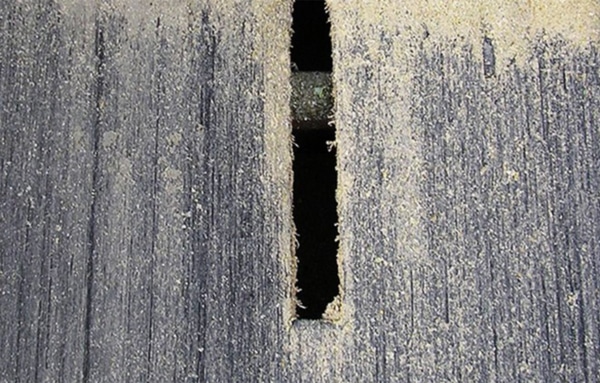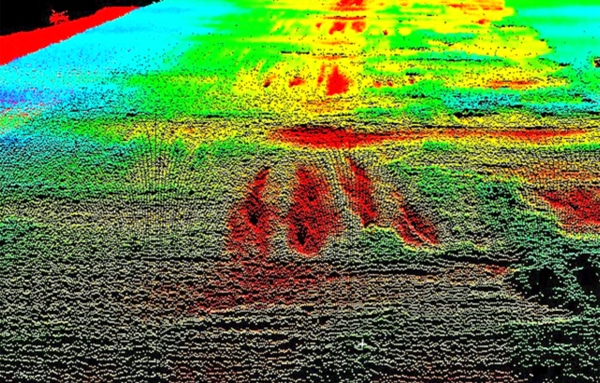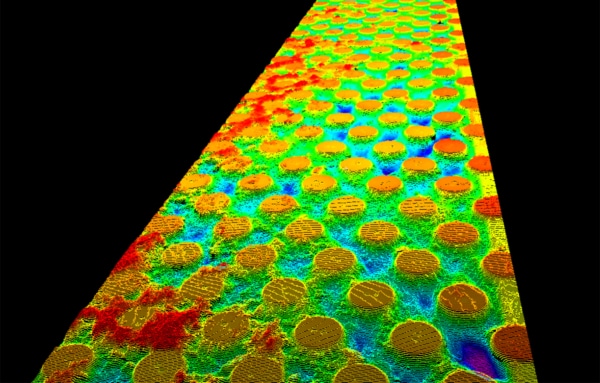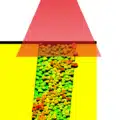Laser scanner use in predictive maintenance at mining
Mining machines are subject to considerable wear and tear. Predictive maintenance is therefore important to avoid unplanned machine downtime.
Mining is becoming increasingly important in the age of growing demand for ores and rare earths. It is estimated that an increase of 7,000% in the yield of copper ore alone will be required to achieve the goals of electromobility.
Problem: Machine failure
As machines in opencast mining are subject to heavy wear and tear, unplanned downtimes mean considerable costs due to long waiting times for spare parts procurement and repairs. Predictive maintenance can be used to minimize downtimes due to unplanned repairs. This involves constantly measuring the most important wearing parts and calculating the degree of wear. This data can be used to calculate and plan a maintenance date. Spare parts and maintenance personnel are then available in a coordinated process.
New solution: 3D laser scanners measure wear
EXEMPLE1: Conveyor belts
In large opencast mines, conveyor belts with a length of 10-20 km are sometimes used. These conveyor belts are made of vulcanized rubber with steel inserts. Some of the material being conveyed consists of pointed and sharp-edged stones that fall from a tower onto the conveyor belt at a certain height. Sometimes these stones cut through the conveyor belt, causing a crack. If this crack is not noticed and repaired, it can expand due to the forces acting on the belt and eventually cut the belt completely open. As the plant continues to run for a while, the rock then builds up into a mountain and the plant has to come to an unplanned standstill. This often means that the downstream processing operations also come to a standstill. Such an accident is associated with high costs.
SOLUTION: Inline monitoring of the conveyor belts with QuellTech line laser
3D laser line sensors from QuellTech are used for the non-contact detection of cracks. The sensors project a laser line perpendicular to the direction of movement of the conveyor belt onto the underside at the point where the rock falls onto the belt. If a stone cuts through the belt, this surface change is detected in 3D by the sensor and recorded. Depending on the size of the defect, an alarm is triggered and, if necessary, the system is shut down in a controlled manner and repaired immediately. At another point, the surface of the conveyor belt is measured for wear using QuellTech 3D laser line sensors. As the belt is running at this point without conveyed goods and has been cleaned, the belt thickness and gradual wear can be measured at individual points. As the fault location is also recorded, a repair can be carried out precisely at the points found as part of predictive maintenance. This allows the service life of a conveyor belt to be extended in a controlled manner. The use of highly robust conveyor belts, which are sometimes 10 times more expensive, can thus be avoided.
New solution: 3D laser scanners measure wear
Example 2: Stone crushing machines
During the ore mining process, larger or smaller boulders are produced. In order to be able to transport the rock or ore on conveyor belts and process it later, it must be crushed. There are various machines that crush rock. On the one hand, there are large drums, inside which steel balls crush the rock with the help of gravity by rotating the drum. High-pressure crushing machines are much more efficient. These use 2 large counter-rotating rollers with certain cleats or wave-shaped structures on their circumference that pull the rock into the narrow gap between the rollers. In the process, the rock crushes itself due to the pressure of the rock chunks. Nevertheless, the surface structures of these rollers wear down considerably. This wear can lead to the roller becoming unusable.
SOLUTION: Inline monitoring of roller surface with QuellTech line laser
Advantages of the QuellTech solution for mining
- 3D display provides an overview of the wear condition over the entire surface
- Continuous checking of the wear condition allows for forward-looking planning.
- Quality assurance through early alarm in the event of serious faults, an emergency system stop prevents serious damage
- Precise localization of defects enables fast repairs, eliminating time-consuming searches
- Higher productivity thanks to less unplanned downtime
- Cost savings through predictive maintenance
You are currently viewing a placeholder content from Facebook. To access the actual content, click the button below. Please note that doing so will share data with third-party providers.
More Information





 Ceramic particles for heat transfer
Ceramic particles for heat transfer